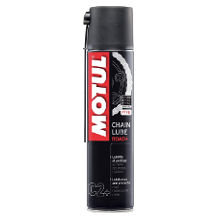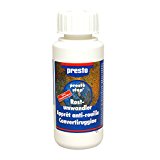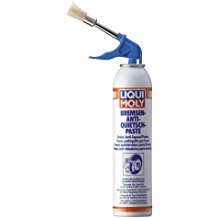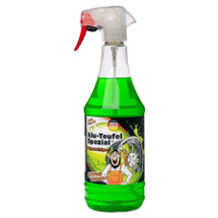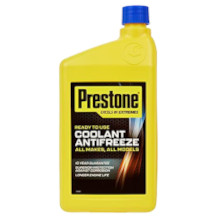Car polishing machine purchasing advice: how to choose the right product
- The most important facts in brief
- A polishing machine can be used to remove scratches from surfaces such as car paint.
- Polishing machines are not only suitable for working on car paint – they can also be used to polish parquet and stone floors as well as metal and plastic surfaces.
- Rotary polishers are more suitable for experienced users due to their speed, whereas eccentric polishers are ideal for beginners.
- Before polishing, all dirt on the surface must be removed, otherwise craters may occur.
Brought to a high gloss
If you care about your car or motorbike, you will spare neither time nor effort to regularly polish the paintwork of your vehicle to a high gloss. A polishing machine takes over this tedious work and is particularly effective. Even minor scratches and other signs of wear can be removed quickly and easily with a polishing machine. You can even avoid one or two visits to the workshop.
Polishing machines are not only worthwhile for the vehicle: Do-it-yourselfers also benefit from the practical helpers when preparing delicate surfaces – for example, for floors, older furniture and other collectors’ items that have lost their shine after a certain time. In addition, the electric tools can be used as sanders.
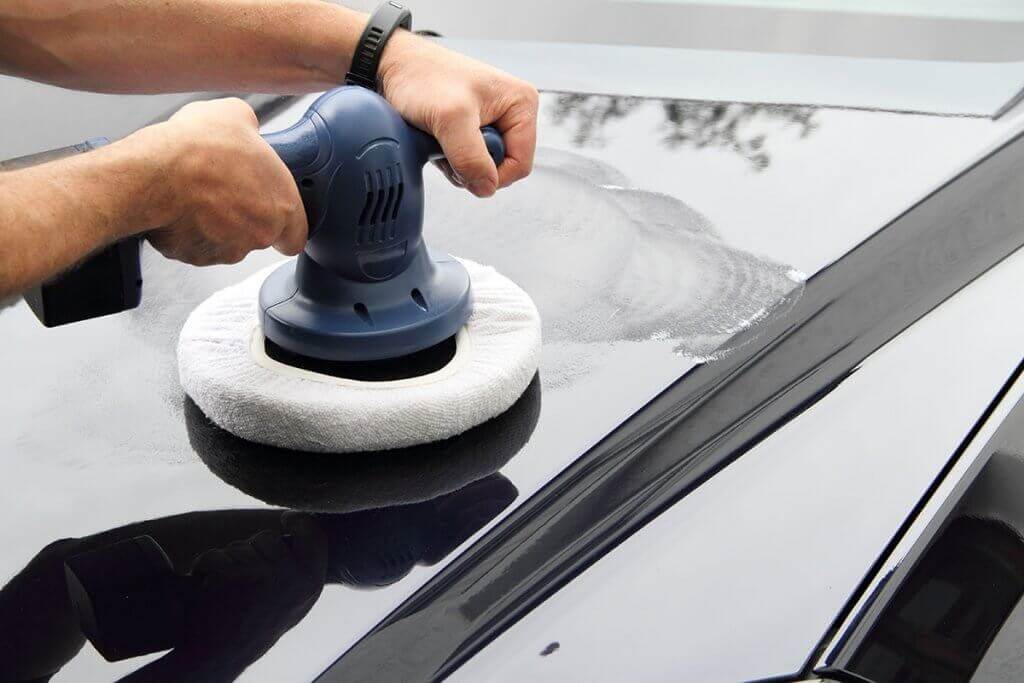
These properties make polishing machines the perfect tools for polishing metal and gently preparing and sealing wood and painted surfaces. But also surfaces made of stone, aluminium, brass and stainless steel can be cleaned and processed perfectly with polishing machines. There are various models that are aimed at either beginners or more experienced users. Especially sensitive surfaces such as car paint require careful and gentle treatment, otherwise so-called holograms or other damage to the paintwork can quickly occur.
What are holograms?
Holograms can occur when polishing painted surfaces. They are basically very fine micro-scratches that run in parallel paths due to the rotation of the polishing machines and are often caused by dirty pads or a polish that is too coarse. When the light falls on the paint at a certain angle, the unsightly streaks become visible.
How do polishing machines work?
Polishing machines have a round attachment at the front end that moves in a circle driven by a motor. By matching different pads, polishes and speeds, a wide variety of surfaces can be treated. In addition to professional devices used on construction sites and in workshops and special parquet polishers, handy models for home use make it easier to care for objects made of wood, metal and plastic as well as cars, motorbikes and boats.
There are rotary polishers, eccentric polishers and floor-standing machines. The models differ mainly in their power, speed, size and weight. Depending on the intended use, corded or battery-powered devices are more suitable. In addition to electric polishing machines, there are also models that work with air pressure. However, these are rarely used in private homes.
Rotary polishing machines: The classics
With these models, the polishing pad rotates around its own axis at a constant speed. The speed is usually very high, so rotary polishers are particularly suitable for larger surfaces. This is why these machines are more likely to be found in the professional sector, for example on construction sites. Parquet polishing machines are also rotary models. Rotary polishers are ideal for areas that are difficult to access.
Pro points
- High polishing speed
- Strong power
- Adjustable speed
- Suitable for professional work
Drawbacks
- Heating of the varnish
- Exercise required
- Sometimes causes paint damage
Eccentric polishing machines: For beginners
In addition to rotating around their own axis, eccentric polishing machines swing back and forth in a circular or oscillating motion. These models usually work at a low speed and are therefore comparatively quiet. They are very easy to handle and work at a lower speed than rotary polishing machines. This means that more careful work is possible with eccentric polishing machines, and the temperature of the surface also remains in a low range. For these reasons and thanks to the vibration, the formation of holograms is largely avoided. The machines are therefore particularly suitable for beginners.
Pro points
- Easy handling
- Large working radius
- Particularly gentle work
- Ideal for beginners
Drawbacks
- Scratch removal not optimal
- Low power
Floor-standing units: For compact workpieces
Floor-standing machines are particularly suitable for craftsmen and can be attached to a workbench or table. Unlike hand polishing machines, floor-standing machines do not work with discs, but with grinding or polishing belts. These move in a circle via vertically mounted rollers, so that with this variant you have to hold the workpieces against the belt. In this way, the workpieces can be ground and polished particularly precisely.
Pro points
- Suitable for workbenches
- Particularly precise work
Drawbacks
- No mobile use
What you should pay attention to when buying
Not only the type of polishing machine is decisive for the respective field of application. Criteria such as the material and the diameter of the polishing wheel, the power supply, the volume and the weight also play a role in the purchase decision.
Which polishing disc is suitable for which purpose?
When choosing a polishing disc, it depends on the surface you want to work on. Larger polishing discs are well suited for large surfaces, while hard-to-reach areas can be better worked on with smaller polishing discs. As a rule, the diameters are between 55 and 255 millimetres. The material of the surface to be worked on is another decisive criterion, as this determines the choice of attachment. Medium diameters of 125 to 145 millimetres are suitable for bulky vehicle parts. Many machines come with a selection of attachments, such as carbon brushes, synthetic and lambskin polishing bonnets, sponges, felts and pads.
Stroke
The stroke is primarily relevant for eccentric polishing machines. It describes the radius of the oscillating circle that the polishing pad describes during its circular movements. The smaller the stroke, the better the handling – even in narrow and hard-to-reach places. A larger stroke, on the other hand, enables a stronger sanding or smoothing effect and is therefore particularly suitable for removing scratches. As a rule, the stroke is between 5 and 25 millimetres.
How are polishing machines operated?
Polishing machines are usually electrically operated. Corded versions can be connected to a conventional socket via a cable. Depending on the intended use, the cable should be of an appropriate length: At least four metres is advisable. A shorter cable is usually sufficient for floor-standing units, while the cable should be longer for mobile use. For polishing larger floor areas, cables with a length of five to ten metres are recommended so that you don’t have to keep moving them around. However, there are also battery-powered devices that are particularly suitable for flexible use on the car or motorbike. Here it may be worth having a spare battery to hand in case the battery runs out during work.
Power and speed
A rotary polisher should have a power of at least 1,200 watts, while an eccentric polisher is already sufficiently powerful from 200 watts. Beginners in particular benefit if the speed of the machine can be adjusted in stages. The higher the speed, the more difficult it is to handle – so you can start with a low speed at first and familiarise yourself with the work. When you are confident, you can increase the speed.
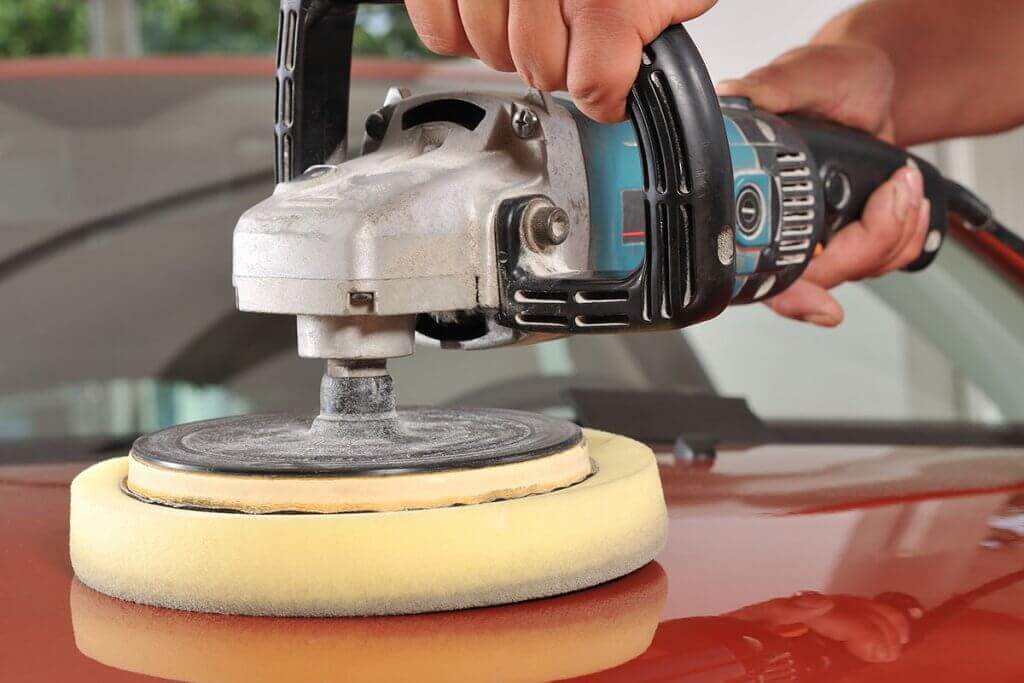
Some machines have a so-called soft start. These models start slowly and only gradually increase the speed. On average, polishers have a speed of 600 to 9,600 revolutions per minute.
Volume
The noise level also plays an important role in the purchase decision, depending on where the polisher is to be used. On average, the volume is around 70 to 90 decibels. At 70 decibels, the machine is about as loud as a hoover or a hair dryer. A model with a noise level of 90 decibels is already similar in volume to a hand sander or a heavy motor vehicle.
Dimensions and weight
Size and weight are decisive for safe handling of the polishing machine. Most machines weigh between one and four kilograms. Even with a high power rating, it is important to have control over the machine. At the same time, the machine should not exceed a length of 45 centimetres, a width of 30 centimetres and a height of 35 centimetres. Models with padded and ergonomically shaped handles guarantee particularly comfortable handling.
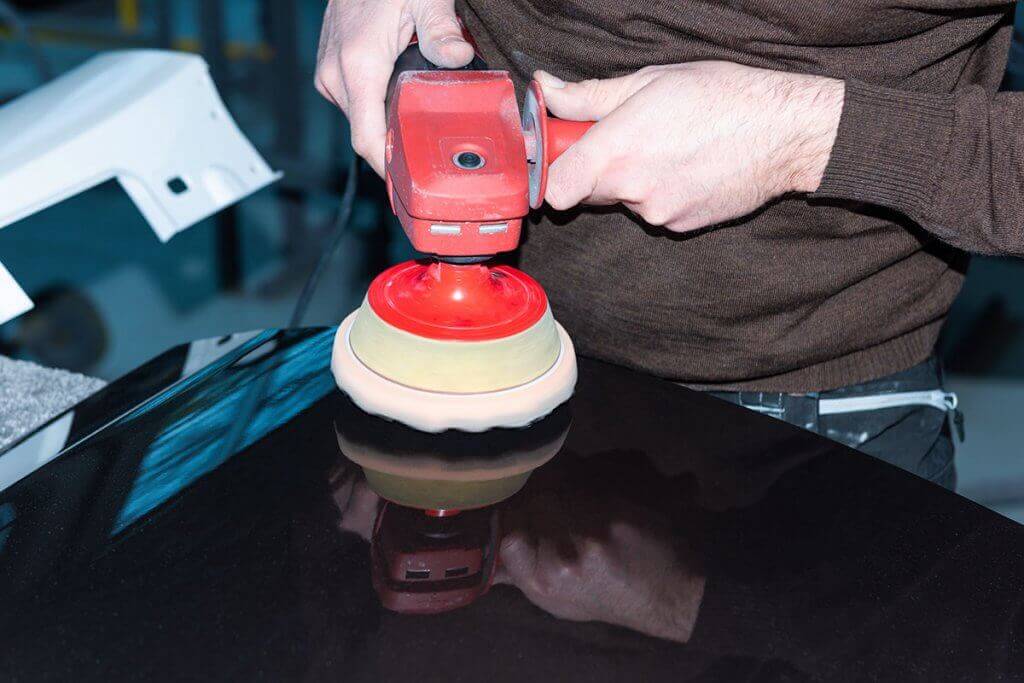
What other functions should a polishing machine have?
For beginners, certain protective functions such as restart protection or overload protection are recommended. With overload protection, a built-in bimetal deforms under the influence of heat and triggers a mechanism that disconnects the machine from the power circuit. The restart protection prevents the machine from starting suddenly and by itself. This protects not only yourself, but also the surface on which the machine rests.
Important notes on the polishing process
Not only the right machine and the appropriate accessories are important for the perfect result; the correct procedure is also essential and prevents possible damage such as fine scratches and holograms. Especially with sensitive surfaces such as car and motorbike paints, you have to be careful and prepare them particularly gently.
The right preparation
Before you start polishing, you should clean the surface carefully. All dirt must be removed in the first step; otherwise there is a risk that the polish will cause damage to the surface.
Polishing in the shade
When polishing in the sun, there is a risk that the heat will soften the paint. As a result, the work leaves scratches or other visible damage more easily. It is therefore better to polish in the shade or in covered places such as the garage.
The right polishing wheel
The choice of polishing wheel depends on the surface to be polished. In the first step, use a polishing wheel made of hard felt to treat dull spots and minor scratches. For repolishing and subsequent waxing or sealing, it is best to use wheels made of a softer material.
The right procedure
A gentle approach is important to protect sensitive surfaces from damage. A low speed with even, low pressure prevents scratches. The choice of polish depends on the surface to be worked on. For sensitive materials such as car paint, you should use a particularly mild polish. If scratches or matt lacquers are to be worked on, a polish with a high abrasive content is recommended.
First, a small amount of polish is applied to the sponge of the machine and moistened with a little water. The moisture makes the polisher run better and cools down the lacquer at the same time. Keep the machine constantly in motion, otherwise paint burns may occur. The next step is to polish again with a fresh polishing cap, for example made of synthetic or lambskin. After polishing, apply a layer of wax to seal the paintwork. This ensures that the surface is protected and shines for a long time. There are also polishes that already contain protective wax – this makes this extra step unnecessary.


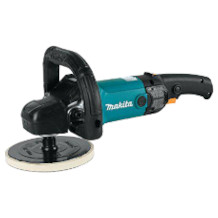
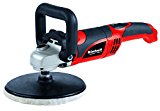
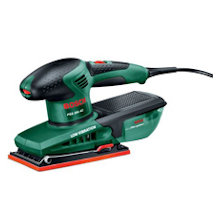
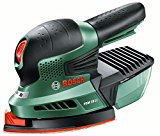
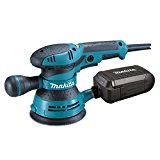
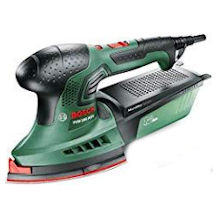

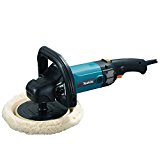


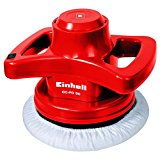
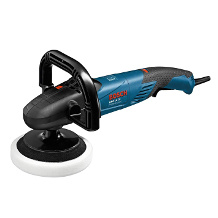
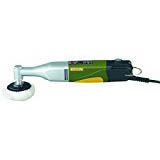
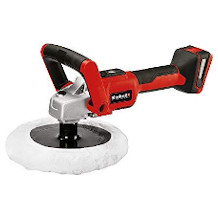
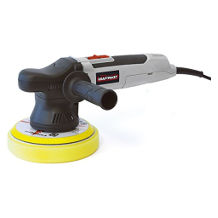
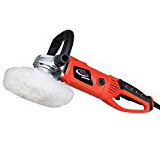
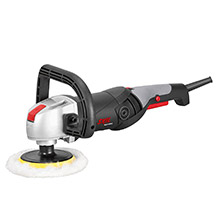
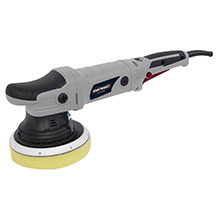

 1,959 reviews
1,959 reviews


